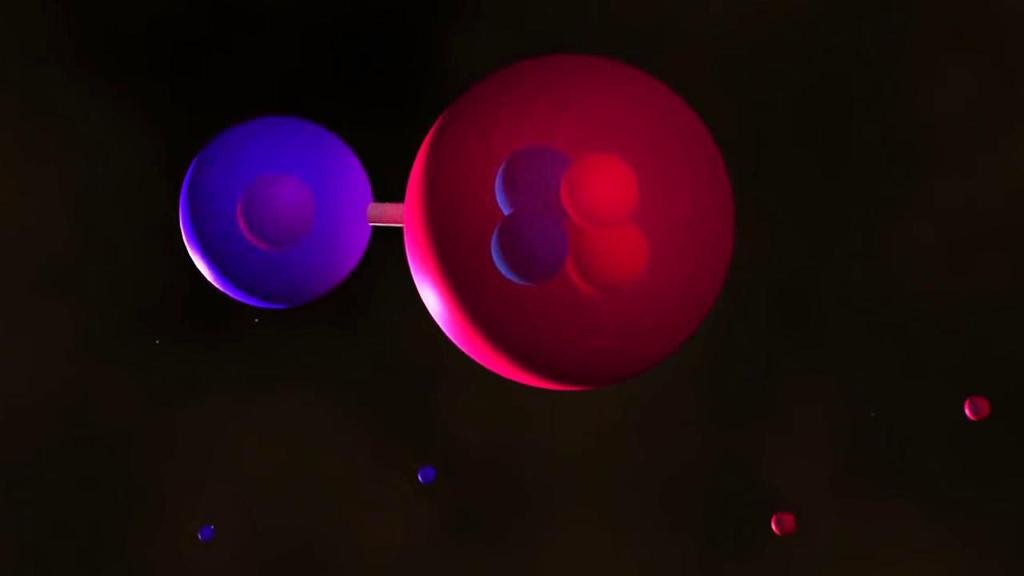© 2000-2025 - Enkey Magazine - All rights reserved
ENKEY SNC - VAT ID IT03202450924 / REA Code CA253701 - Phone. 078162719
HeH+, molecular ion of helium hydrade, is the first molecule of the just born universe, which dates back to 13,8 billions of years ago. By the way this was just a theory until few days ago, when the discovery of the helium hydrade, the first molecula of the universe spreaded all over the world.
The Universe’s dawn
13,8 billions of years ago an explosion ripped through the cosmic void, giving life to the Universe. A complex system of stars, planets and galaxies, a mystery that has its roots such in depth that all we know about its birth are mostly theories and speculations. As long as they can be concrete and scientifically correct, rarely we had the occasion to demonstrate the Big Bang.
The one that the science says to us is that the newborn Universe wasn’t as it appears now. It was a simple soup, which chemical composition was such elementar to not require skill and competence to understand its functioning.
At the beginning of all there were the atoms of just three elements which were running through a just created infinite universe. They were mainly hydrogen and helium, but sometimes it was possible to find even some atoms of lithium.
It had to pass over 100.000 years before that those atoms were able to combine into the easier possible molecula with a chemical reduced to the essential. After 100.000 years in the Universe appeared the Helium Hydrare, the first molecula.

The Universe’s creation
For 100.000 years, so, the Universe was nothing more than a cosmic void with wandering atoms of hydrogen, helium and lithium. But the creation of the helium hydrade was a major breakthrough. The Universe started to get colder and the first molecula was able to combine itself over and over again in other chemical reactions with the few available elements.
The Helium Hydrade combined itself again with another atom of hydrogen, giving life to a new molecula, H2. The molecular hydrogen is the secret of the stars’ life. It was like that the first stars started to appear in the universe, which finally wasn’t any more empthy and dark. Afterwards were right the stars to set off chimical reations, giving life to all the elements that today we know.
The discovery of the Helium Hydrade
The discovery isn’t a case, the scientists were looking for it for years. To find it they used SOFIA (Stratospheric Observatory for the Infrared Astronomy). This special telescope isn’t on the mainland, but onboard of a Boeing 747SP, which is strictly used to make astronomic observations from the stratosphere, at 12 km of altitude to sea level. The research was possible thanks to a cooperation between NASA and DLR (German Space Agency).

The study was published on the magazine Nature and the world of astronomy is enthusiastic about the discovery. “The lack of proofs about the existence of the helium hydrade in the space was a real dilemma for astronomy, but now many pieces of our theories are going into the right place”, said Rolf Gusten, main signatory of the discovery and researcher of the Max Planck Institute, in Germany.
Sofia
Sofia was pointed toward the right direction, the scientists, infact, believed that in that region of the universe there were still the conditions to host this primordial chemical.
So it was able to see the sign in a planetary nebula called NGC 7027, in the Cygnus Constellation, about 3.000 light years away. The nebula might be what remains from a star, which had really similar characteristics than our Sun.
Sofia can be considered as a radio detector. To find a specific molecula it’s enough to tune it on the frequencies that this emitts and looking through that slice of sky where it’s believe it’s hiding. And it’s right what happened and that made the discovery possible.
Finally, after years of researches, the helium hydrade was find, the first molecula of the Universe.
This post is also available in:
 Italiano
Italiano


